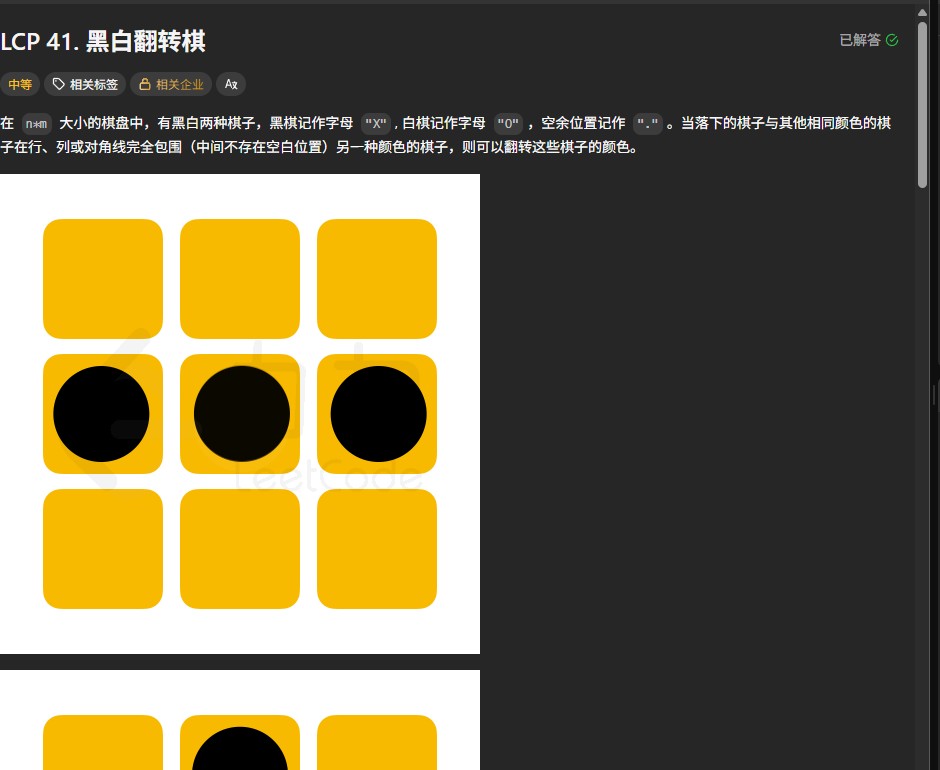
题目要求在一个黑白棋棋盘上找出一个空位('.'表示),当放置一个黑棋('X')后,能够翻转最多数量的白棋('O')。翻转规则遵循标准黑白棋规则:在一条直线上,两个黑棋之间的所有白棋都会被翻转。
class Solution { public: int flipChess(vector<string>& chessboard) { int m = chessboard.size(), n = chessboard[0].size(); int max_flips = 0; // 记录最大翻转数 // 8个方向向量:上、下、左、右、四个对角线 int dirs[8][2] = {{-1,-1},{-1,0},{-1,1}, {0,-1}, {0,1}, {1,-1}, {1,0}, {1,1}}; // 遍历棋盘每个位置 for (int i = 0; i < m; ++i) { for (int j = 0; j < n; ++j) { if (chessboard[i][j] == '.') { // 发现空位 vector<string> temp = chessboard; // 复制棋盘 temp[i][j] = 'X'; // 模拟落子 int flips = countFlips(temp, i, j); // 计算翻转数 max_flips = max(max_flips, flips); // 更新最大值 } } } return max_flips; } // 计算单次落子后的翻转数量 int countFlips(vector<string>& board, int x, int y) { int flips = 0; int dirs[8][2] = {{-1,-1},{-1,0},{-1,1}, {0,-1}, {0,1}, {1,-1}, {1,0}, {1,1}}; // 检查8个方向 for (auto& dir : dirs) { int dx = dir[0], dy = dir[1]; int nx = x + dx, ny = y + dy; vector<pair<int,int>> to_flip; // 记录待翻转位置 // 沿当前方向搜索 while (nx >= 0 && nx < board.size() && ny >= 0 && ny < board[0].size()) { if (board[nx][ny] == 'O') { // 遇到白棋 to_flip.emplACe_back(nx, ny); nx += dx; ny += dy; } else if (board[nx][ny] == 'X') { // 遇到黑棋,可以翻转 for (auto [i,j] : to_flip) { board[i][j] = 'X'; // 执行翻转 flips++; } flips += flipChain(board, to_flip); // 处理连锁反应 break; } else { // 遇到空位,终止搜索 break; } } } return flips; } // 处理连锁翻转 int flipChain(vector<string>& board, vector<pair<int,int>>& positions) { int additional = 0; for (auto [x,y] : positions) { additional += countFlips(board, x, y); // 递归计算新增翻转 } return additional; } };
方向数组应用:使用8方向向量简化方向遍历
递归思维:通过flipChain函数处理连锁反应
棋盘复制技巧:使用temp副本避免修改原棋盘
这种棋盘模拟+递归搜索的方法也适用于:
五子棋AI评估
围棋局面分析
其他棋盘类游戏逻辑实现
参考:编程资料